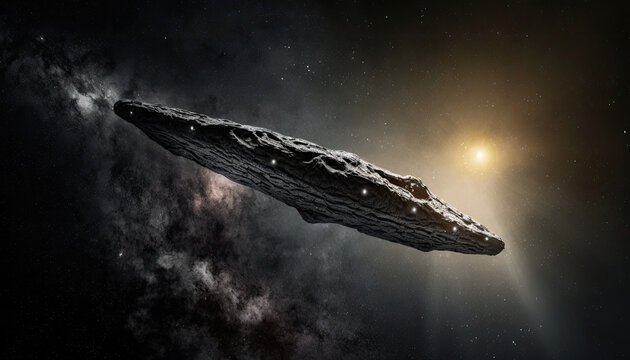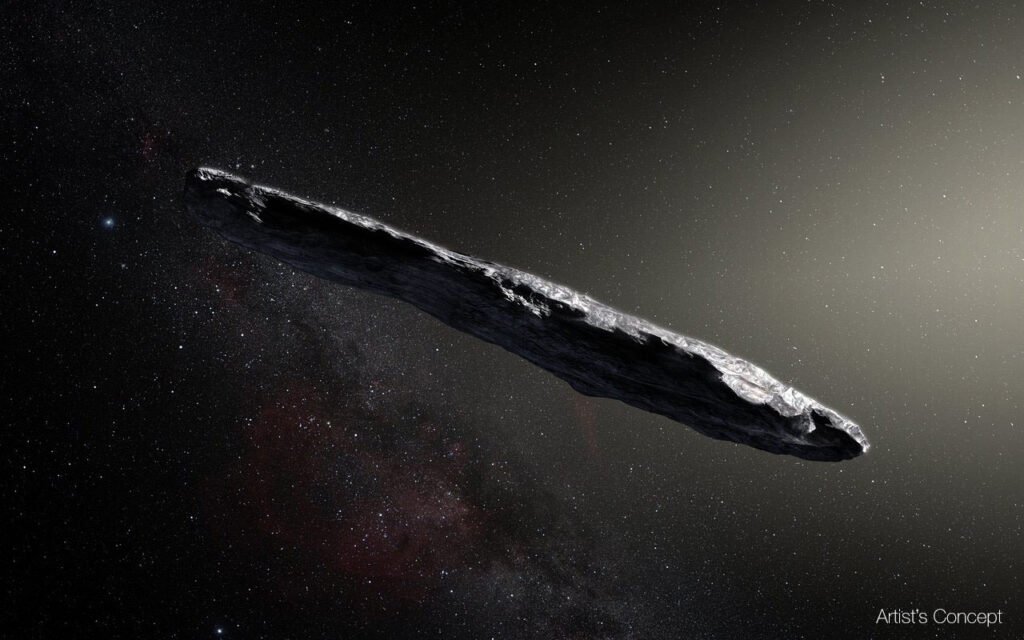In the vast expanse of the cosmos, celestial bodies often captivate our imaginations with their mysterious origins and enigmatic behaviors. One such remarkable entity that piqued the curiosity of astronomers and space enthusiasts alike is Oumuamua, an interstellar object that journeyed through our solar system in 2017. While it was initially classified as a comet, Oumuamua’s unique characteristics have prompted discussions about its true nature and origin.
Oumuamua, which means “scout” or “messenger” in Hawaiian, was first detected on October 19, 2017, by astronomers using the Pan-STARRS1 telescope in Hawaii. Its distinct trajectory and unusually high speed indicated that it originated from outside our solar system, making it the first known interstellar object to pass through our neighborhood. As researchers focused their instruments on this mysterious visitor, they were met with a series of puzzling featuresWhile comets are typically composed of ice and dust, Oumuamua’s appearance was devoid of the characteristic cometary tail, suggesting that it might be something entirely different. Its reddish hue hinted at a metallic or rocky composition, further shrouding the object in intrigue. The lack of visible outgassing—the release of gases as a comet heats up—only deepened the mystery, as it defied the behavior expected from a typical comet.

Oumuamua’s tumbling motion added another layer of complexity. Unlike the smooth rotation exhibited by most solar system objects, this visitor spun irregularly, leading to variations in its brightness that were observed from Earth. These erratic changes in luminosity offered astronomers valuable insights into its elongated, cigar-like shapeVarious theories have emerged in an attempt to explain Oumuamua’s characteristics. Some have proposed that it might be a fragment of a larger object that was torn apart by tidal forces when it came too close to a star. Others have suggested it could be a piece of an exoplanet, or even a discarded component of alien technology. However, definitive evidence to support these hypotheses remains elusive.
The study of Oumuamua has sparked debates and spurred innovative research. Its unexpected arrival has prompted scientists to consider the possibility of similar interstellar visitors that may have gone unnoticed in the past. Space agencies and astronomers are now developing more advanced telescopes and observation techniques to better identify and study such objects in the future.Oumuamua’s brief passage through our solar system—lasting only a few months—underscored the importance of seizing opportunities to study these interstellar visitors before they vanish into the cosmic void. Its trajectory reminded us that our galactic neighborhood is teeming with mysteries waiting to be unraveled.

In the annals of space exploration, Oumuamua stands as a symbol of the profound questions that the universe poses. While it might not fit neatly into any established category, its uniqueness has ignited a renewed sense of wonder and curiosity among scientists and the public alike. As we continue to gaze at the stars, Oumuamua serves as a powerful reminder that even in the vastness of space, there are always new discoveries awaiting those who dare to explore the unknown.




































